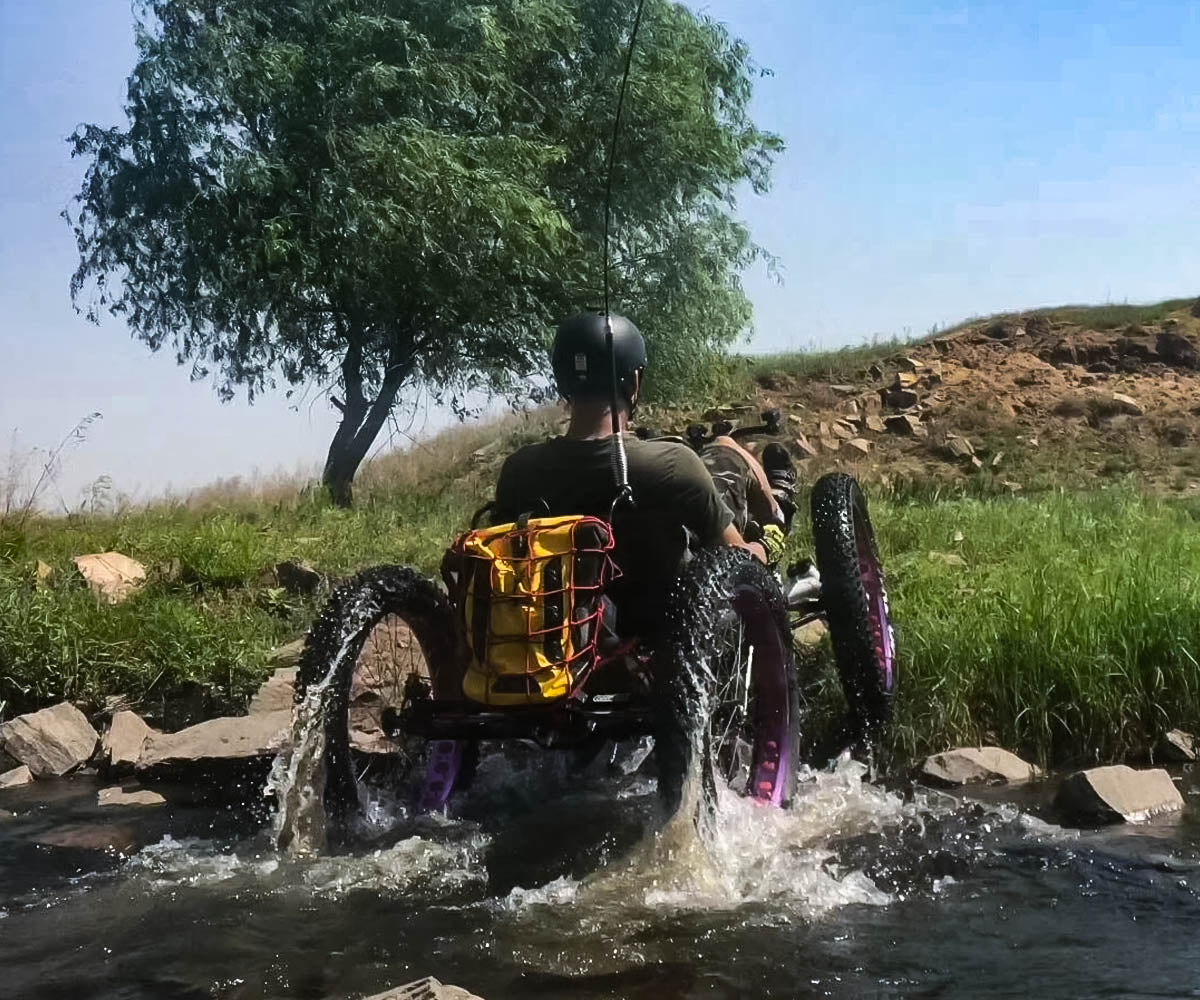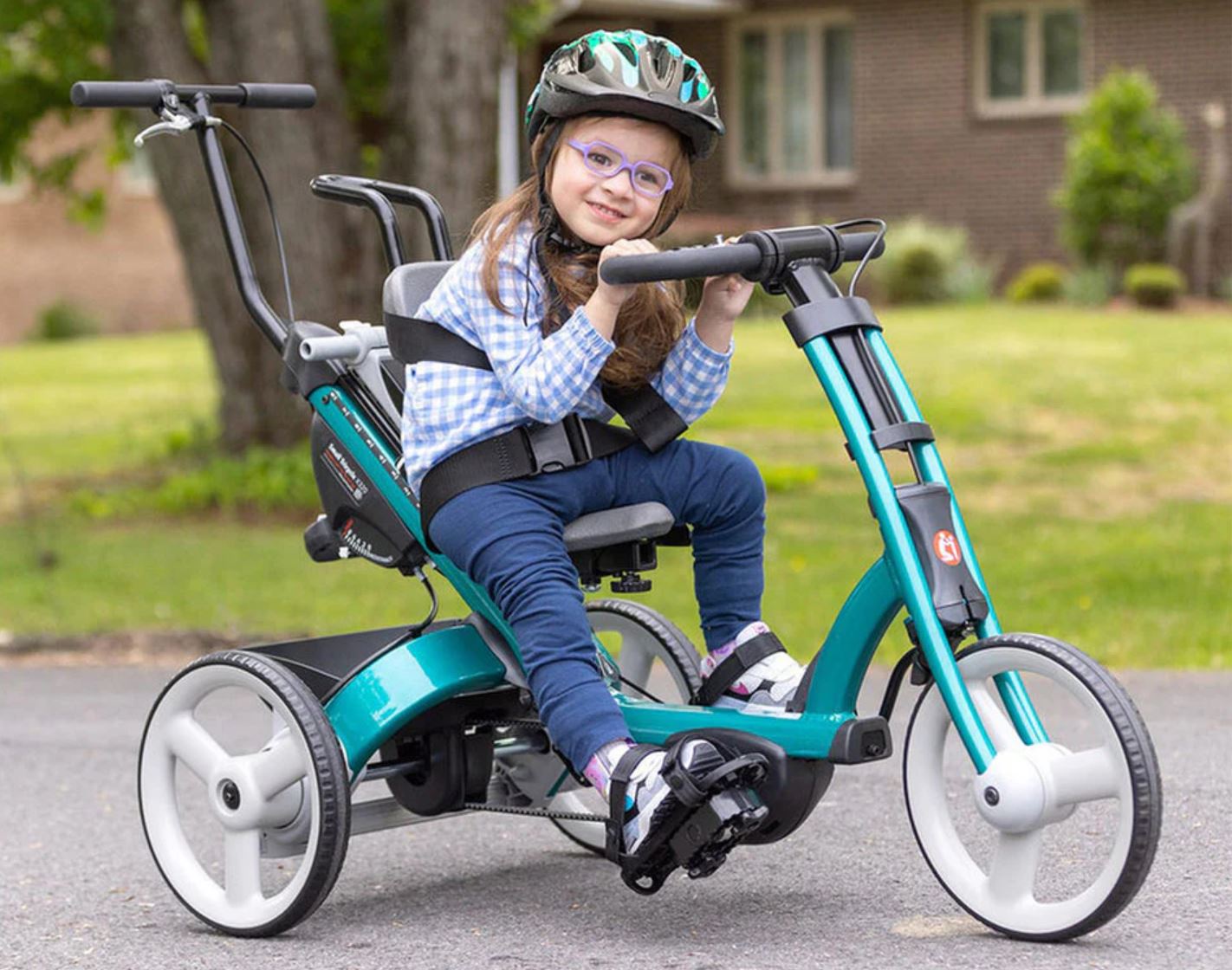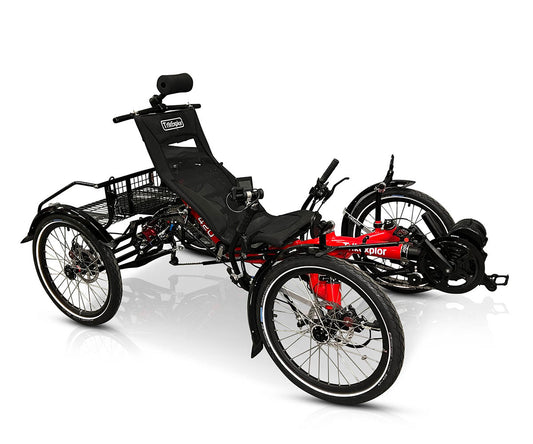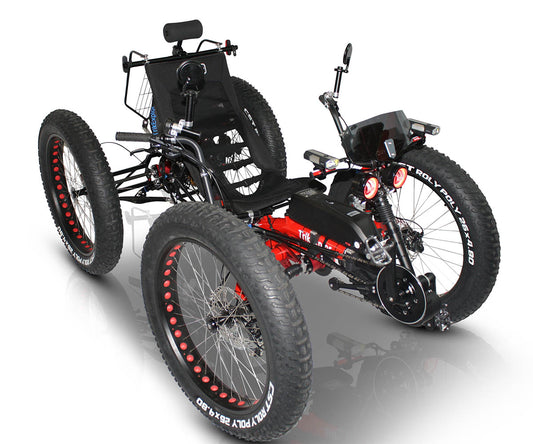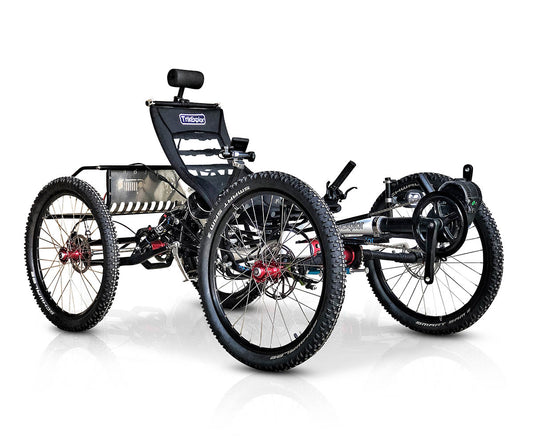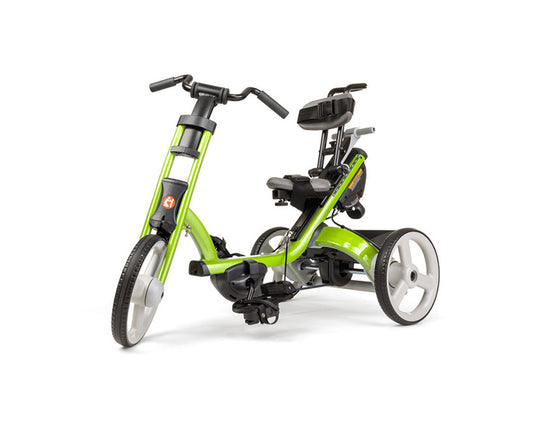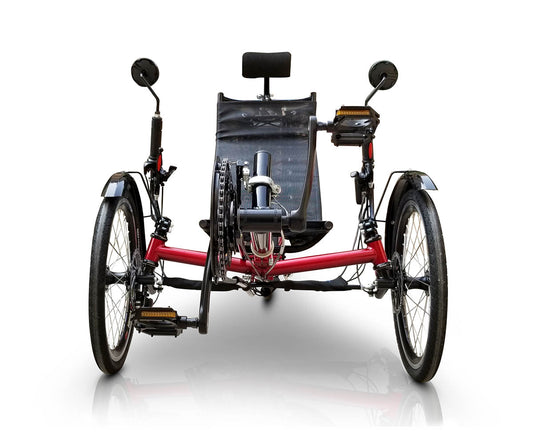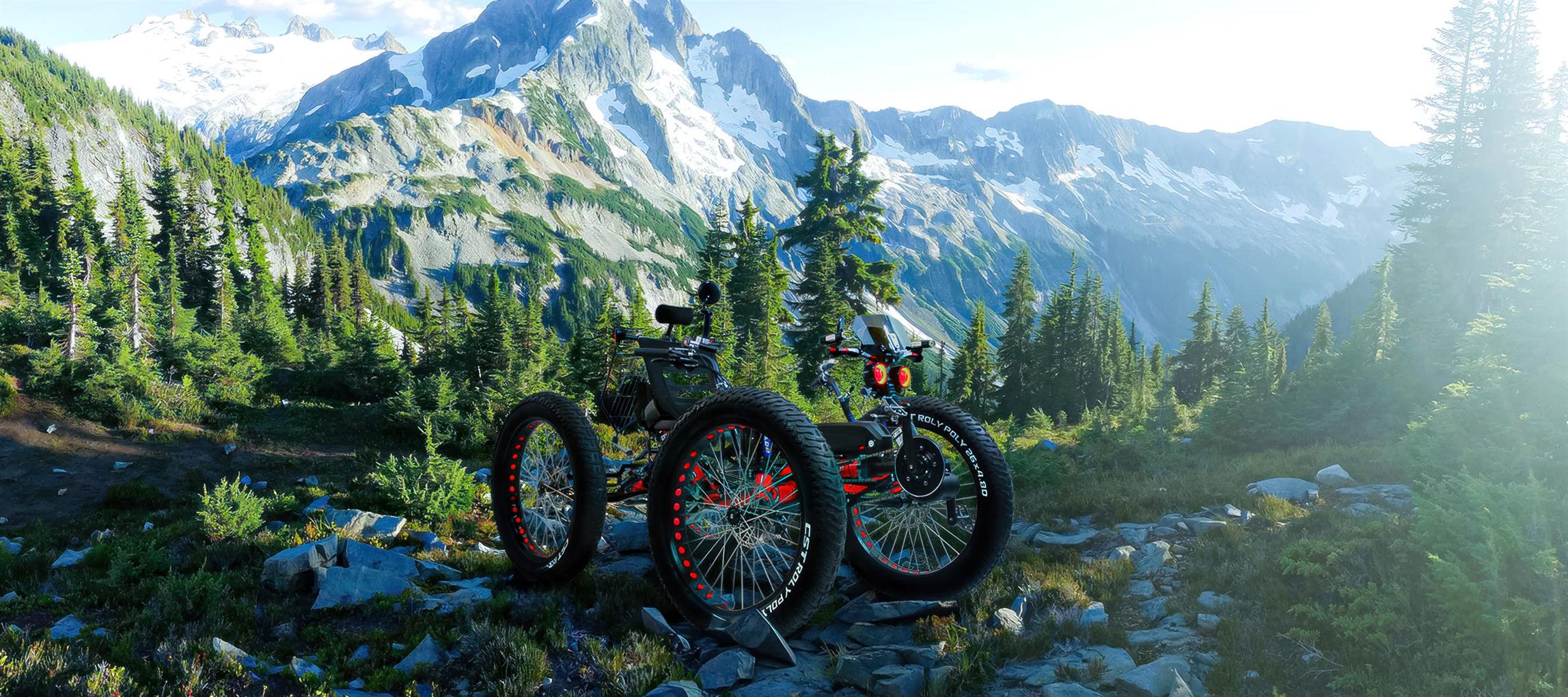
Freedom to Move, Freedom to Explore
Your journey, your ride, your way. Find a bike that’s as unique as you are, and make every adventure unforgettable.
A ride for every new path
Find the ride that’s meant for you! From adaptive bikes and off-road quads, to long-range touring cycles and electric boosted trikes, there’s a perfect cycle for your unique journey.
Featured Trikes and quads
Crafted for exploration and adventure
Discover our top-rated trikes and quads, designed for ultimate performance and comfort. Whether you're seeking thrilling adventures or leisurely rides, find the perfect model to match your journey and make every moment truly unforgettable.
DuraTrike FX36e Tricycle
TrikExplor 420e Quad
More Than Just a Bike - It's a Personal Journey
Embark on a voyage of discovery and empowerment with our versatile range of adaptive trikes and quads. Every model we present is a testament to our dedication to your individual journey. With an extensive array of customization options, we ensure that every detail of your ride is tailored to fit your lifestyle and preferences. Beyond a product, we offer a commitment to a community of enthusiasts who believe in the transformative power of a great ride. This is not just about the freedom of movement; it’s about the joy of connecting with others and sharing the paths less traveled.
-
TrikExplor F426e Quad
Vendor:TrikExplorRegular price $9,999.00 USDRegular priceUnit price / per -
TrikExplor 424e Quad
Vendor:TrikExplorRegular price $7,999.00 USDRegular priceUnit price / per -
Rifton X320 Tricycle
Vendor:Adaptive BikesRegular price $2,595.00 USDRegular priceUnit price / per -
DuraTrike RT3e Electric Tandem Tricycle
Vendor:DuraTrikeRegular price $8,999.00 USDRegular priceUnit price / per -
DuraTrike FX36e Tricycle
Vendor:DuraTrikeRegular price $3,299.00 USDRegular priceUnit price / per$2,699.00 USDSale price $3,299.00 USD -
DuraTrike FT36e Tricycle
Vendor:DuraTrikeRegular price $2,499.00 USDRegular priceUnit price / per -
TrikExplor F420e Quad
Vendor:TrikExplorRegular price $8,199.00 USDRegular priceUnit price / per -
TrikExplor 420e Quad
Vendor:TrikExplorRegular price $7,999.00 USDRegular priceUnit price / per
Gear Up with in-depth resources on Recumbent Bikes!
View all-
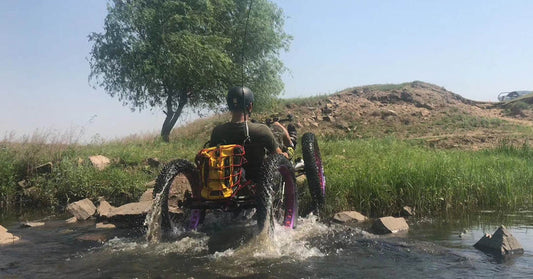
Accessible Mobility: Exploring Bike Trailers an...
Embracing the outdoors with family and adventure isn't just a pastime; it's a lifestyle that adapts to every individual's needs. Bike trailers and jog strollers have evolved beyond simple conveyances...
Accessible Mobility: Exploring Bike Trailers an...
Embracing the outdoors with family and adventure isn't just a pastime; it's a lifestyle that adapts to every individual's needs. Bike trailers and jog strollers have evolved beyond simple conveyances...
-
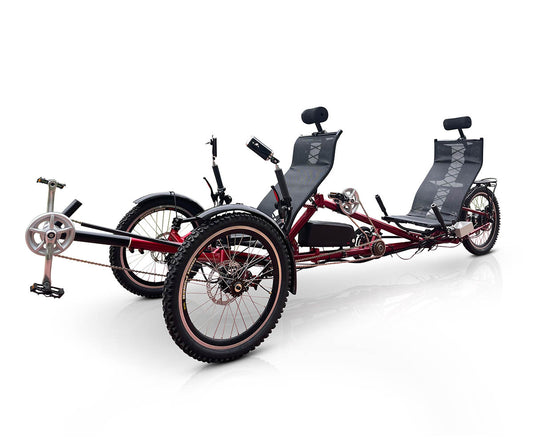
In Tandem: The Comprehensive Guide to Double-Se...
Tandem bicycles, often hailed as the bicycle built for two, embody a unique blend of companionship and teamwork on two wheels. These bikes are not just a symbol of leisurely...
In Tandem: The Comprehensive Guide to Double-Se...
Tandem bicycles, often hailed as the bicycle built for two, embody a unique blend of companionship and teamwork on two wheels. These bikes are not just a symbol of leisurely...
-

Riding Redefined: How Recumbent Quads Are Chang...
Exploring the world of cycling from a fresh perspective, recumbent quads offer a unique blend of comfort, stability, and efficiency. This introduction to recumbent quads delves into their design philosophy,...
Riding Redefined: How Recumbent Quads Are Chang...
Exploring the world of cycling from a fresh perspective, recumbent quads offer a unique blend of comfort, stability, and efficiency. This introduction to recumbent quads delves into their design philosophy,...
Adaptive Bikes
Frequently Asked Questions
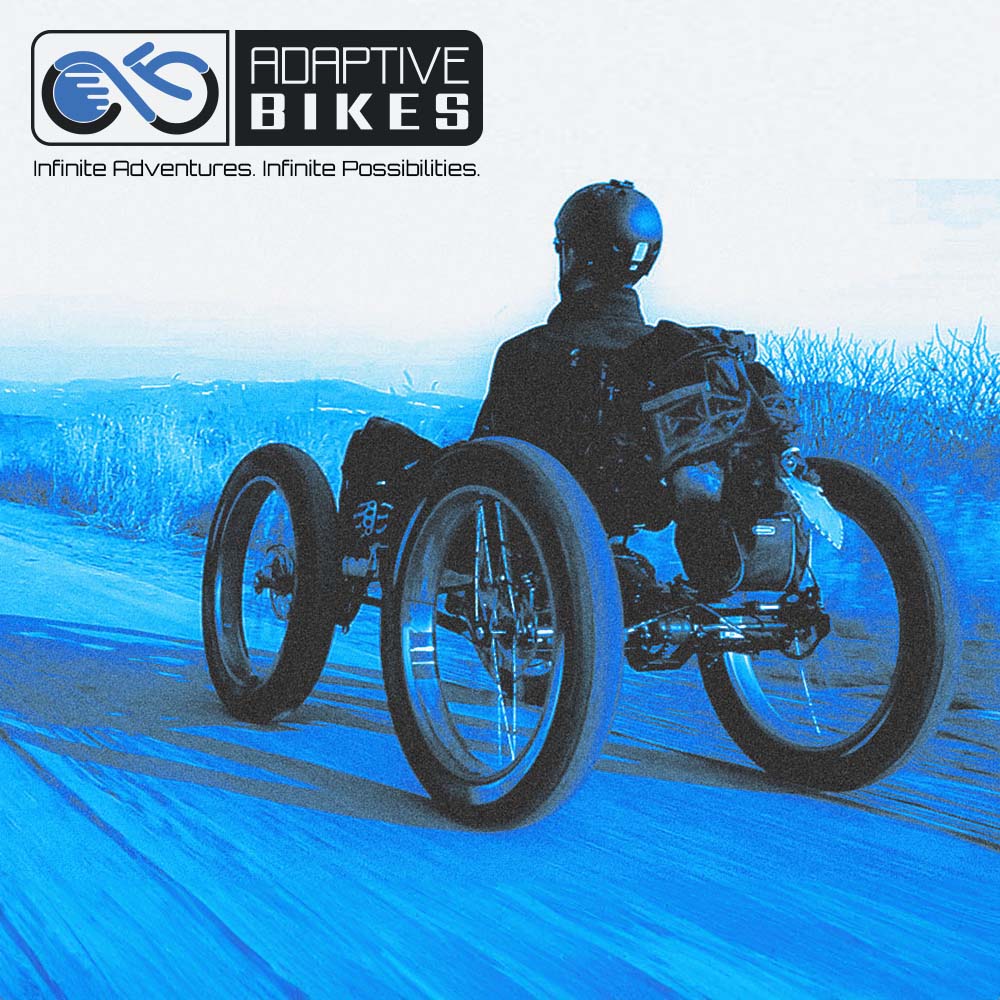
What is an adaptive bike?
Adaptive bikes are purpose-built cycles, customized for a specific experience or need. Adaptive bikes typically have specialized adaptations and features that help to accommodate a rider’s specific needs such as balance challenges, physical disabilities, or cognitive delays. Some examples of adaptive bikes include recumbent trikes and quads, therapeutic tricycles, hand cycles, tandem bikes, and even convertible pushchairs and passenger bike trailers. Each model is crafted to offer what you could call a bespoke experience, ensuring that every ride is not just about getting from point A to B, but about enjoying every moment of the journey with greater comfort and ease. Whether it’s for fitness, leisure, rehabilitation, or a specific athletic challenge adaptive bikes open up new avenues for exploration and independence, making cycling accessible to everyone
What is a recumbent bike?
A recumbent bike is a type of bicycle where the rider sits in a laid-back reclining position. This design provides a comfortable ride by evenly distributing your weight across a larger area, reducing strain on your back and neck. Perfect for those who enjoy long, leisurely rides with enhanced comfort.
Who can benefit from using an adaptive bike?
Adaptive bikes are designed for anyone who is seeking an alternative to a traditional 2-wheel bicycle, or faces challenges with the basic functionality of a 2-wheel bicycle. This includes individuals with physical disabilities, balance issues, mobility impairments, or someone that is no longer comfortable riding a 2-wheel bicycle. Seniors who find traditional bikes uncomfortable can also benefit from the stability and ergonomic design of adaptive bikes such as a recumbent trike or recumbent quad cycle. Additionally, adaptive bikes are great for anyone looking to enjoy cycling with added comfort and support, ensuring that everyone can participate in and enjoy outdoor activities.
What kinds of adaptive bikes are there?
There are several types of adaptive bikes available, each catering to a wide range of needs and preferences:
- Recumbent Bikes and Trikes: These feature a reclined seating position, providing back support and a lower center of gravity for better stability.
- Therapeutic Tricycles: These highly specialized tricycles offer a variety of adaptations for seating and positioning, physical disabilities, attendant assistance features, as well as mechanical adaptations to optimize a rider’s safety, independence, and functionality.
- Handcycles: Powered by the rider’s hands instead of feet, making them ideal for those with limited or no use of their legs.
- Tandem Bikes: Allow two riders, with options for side-by-side or front-and-back seating, perfect for those who need assistance or enjoy riding with a companion.
- Electric Assist Bikes: Equipped with a motor to provide additional power, making cycling easier on hills and longer distances.
Fully Electric Bikes: Ideal for individuals who might face challenges with pedal based propulsion due to physical limitations or those who simply want a break from pedaling, offering a completely motorized ride.
What are the benefits of using a recumbent tricycle?
Recumbent tricycles offer numerous benefits, including enhanced comfort, stability, and visibility. Their ergonomic design reduces strain on your back and joints, allowing you to ride longer distances without discomfort. The stable three-wheel design ensures you can enjoy your ride without worrying about balance, making it perfect for adventurous outings and scenic tours.
Are there adaptive bikes for children?
Yes, there are adaptive bikes specifically designed for children. These bikes come in many forms to accommodate various needs, including tricycles for stability, handcycles for those with limited leg mobility, and tandem bikes for riding with a caregiver. Adaptive bikes for children often include adjustable seats and handlebars, safety harnesses, easy-to-use controls, and even caregiver-assist features to ensure a comfortable and secure riding experience. They are designed to grow with your child and can be customized to meet their unique requirements, making outdoor activities more accessible and enjoyable for young riders.
Are there any financial assistance programs for purchasing adaptive bikes?
Yes, there are several financial assistance options to explore in order to help with the purchase of adaptive bikes. These may include:
- Non-Profit Organizations: Many non-profits offer grants or funding specifically for adaptive sports equipment.
- Government Programs: Some government health and disability services provide financial aid for adaptive bikes as part of mobility assistance.
- Crowdfunding: Platforms like GoFundMe can be used to raise funds from the community to help cover the cost of an adaptive bike.
- Local Community Resources: Check with local community groups, clubs, and charities, as they may offer funding or hold fundraising events to assist with such purchases.
Our partners at Kids Mobility Network have a wide variety of available funding assistance options such as Medicaid Waivers, Foundations, and community programs. Please visit https://www.kidsmobility.org/therapeuticrecreationequipment to learn more about Kids Mobility Network’s therapeutic recreation program or if you’d like to schedule a free consultation. Exploring these options can help make adaptive biking more affordable and accessible to everyone.
What safety features should I look for in an adaptive bike?
When choosing an adaptive bike, safety is paramount. The following features are often considered high priority for ensuring a safe and enjoyable ride.
Stability: Whether choosing a 3-wheel or 4-wheel cycle, adaptive bikes provide a stable platform for cycling. Stability is the first consideration for safe cycling.
High-Visibility Flags, Lights, and Reflectors: While included with most recumbent bikes, flags, lights, and reflectors are essential for making sure you’re seen by others, especially in low-light conditions.
Secure Pedals: Clip in pedals or strap secured pedals with heel seating prevent feet from slipping off the pedals while in motion, an especially important for recumbent trikes or quads.
Mirrors: It can be difficult to do full 180 degree head checks when seated in a recumbent position. Mirrors allow for better awareness of one’s surroundings, crucial for navigating traffic or crowded areas.
Sturdy Frame Construction: While materials science has and frame design has improved drastically in the last few decades, a frame constructed for your intended purposes ensures the cycle can handle various terrains and support the rider’s weight.
Effective Braking System: Hydraulic or disc brakes offer reliable stopping power in all conditions.
Seating and Positioning: There are a variety of seating and positioning accessories to keep the rider securely in place. Accessories such as belts, harnesses, headrests, and lateral supports are just some examples of accommodations that are particularly important for those with limited mobility.
How can adaptive bikes help with physical therapy and rehabilitation?
Adaptive bikes are excellent tools for physical therapy and rehabilitation. They provide a low-impact form of exercise that helps improve cardiovascular health, muscle strength, and joint flexibility without putting excessive strain on the body. Riding an adaptive bike can enhance balance and coordination, which are crucial for recovery from injuries or surgeries. For individuals with mobility impairments or chronic conditions, adaptive bikes offer a way to stay active and improve overall physical fitness. Therapists often incorporate adaptive cycling into treatment plans to promote physical and cognitive well-being, helping patients achieve their rehabilitation goals more effectively.




